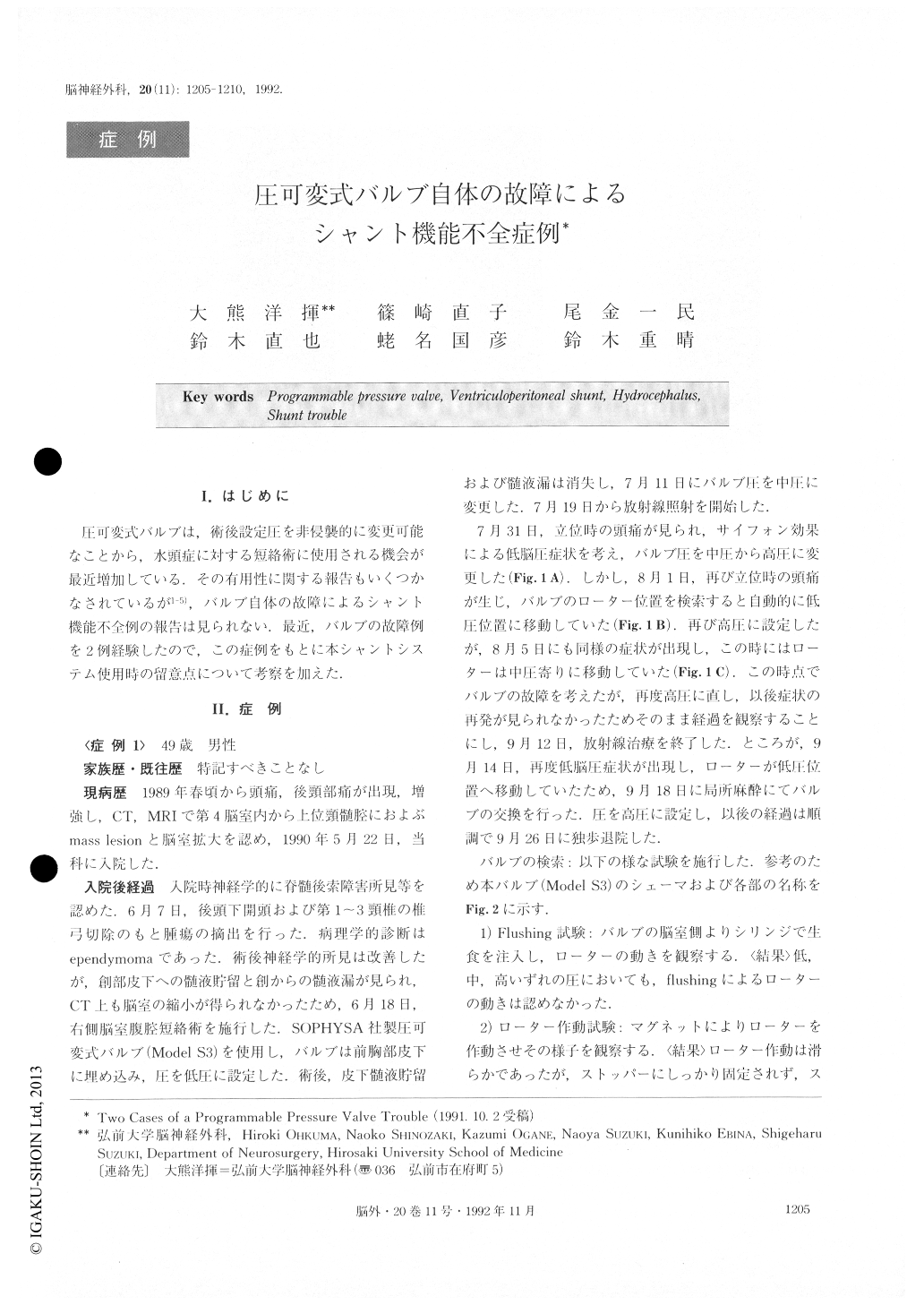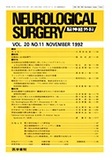Japanese
English
- 有料閲覧
- Abstract 文献概要
- 1ページ目 Look Inside
I.はじめに
圧可変式バルブは,術後設定圧を非侵襲的に変更可能なことから,水頭症に対する短絡術に使用される機会が最近増加している.その有用性に関する報告もいくつかなされているが1-5),バルブ自体の故障によるシャント機能不全例の報告は見られない.最近,バルブの故障例を2例経験したので,この症例をもとに本シャントシステム使用時の留意点について考察を加えた.
Two cases of a programmable pressure valve trouble are reported.
Case#1 was that of a 49-year-old male who had re-ceived a ventriculoperitoneal shunt (VPS) using a So-phy programmable pressure valve (Model 53) after the removal of the fourth ventricle ependymoma. After the VPS, the patient went through several episodes of com-plaining of headache due to the spontaneous movement of the rotor from the high pressure position to the medium or low pressure position. The symptom had disappeared after exchanging the valve for a new one and by setting the valve pressure at high. Examination of the removed valve revealed that the bending-degree of the spring tip was insufficient, and that the opening pressures at the medium and high pressure positions were both lower than the desired range.
Case #2 was that of a 62-year-old female who had received a VPS for normal pressure hydrocephalus us-ing a Sophy programmable pressure valve (Model S3) with the valve pressure set at high. However, her symptoms did not improve, so an attempt was made to change the valve pressure from the high pressure posi-tion to the medium pressure position with a ring mag-net. But the rotor could not be moved. The valve was exchanged and the valve pressure was set at medium, and the symptoms of the patient improved postoper-atively. Examination of the removed valve revealed that the movement of the rotor with a ring magnet was not able to be carried Out smoothly.
We can say that the initial pressure at each pressureposition and the smooth movement of the rotor with a ring magnet should be confirmed preoperatively when a programmable pressure valve is used. And for unex-pected postoperative troubles, the valve should be placed in a region such as the anterior of the chest where it can be easily changed.

Copyright © 1992, Igaku-Shoin Ltd. All rights reserved.


